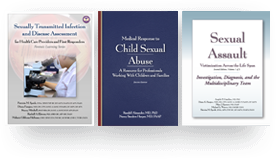The Impact of IPV
 Intimate Partner Violence (IPV) can leave a lifetime impact on survivors, and it doesn’t only affect those who have been victimized directly. Children who have been exposed to the domestic abuse of a parent or sibling, for example, may still face enduring trauma as adults even if they were not maltreated themselves.
Intimate Partner Violence (IPV) can leave a lifetime impact on survivors, and it doesn’t only affect those who have been victimized directly. Children who have been exposed to the domestic abuse of a parent or sibling, for example, may still face enduring trauma as adults even if they were not maltreated themselves.
As illustrated within STM Learning’s publication Intimate Partner Violence, IPV can happen to anyone. However, women are the most common victims. Male partners or ex-partners are most likely to perpetrate abuse.
Individuals with a history of previous abuse or exposure to IPV are considered to be part of a vulnerable population, as they have a higher possibility of being victimized again in future relationships.
Defining IPV
Also known as dating violence or relationship abuse, IPV is commonly defined as a pattern of abusive behaviors within a relationship, with the goal of one partner controlling the other. The term therefore encompasses all forms of psychological, sexual, physical, financial, and digital abuse of a partner. It differs slightly from domestic violence, which more broadly refers to any form of abuse within the home.
IPV can be used to describe a single incident, such as someone injuring their partner or sexually assaulting them, or it may refer to repeated mistreatment or abusive behavior. Identifiable patterns often include manipulation, social isolation from friends and family, stalking, control over what the partner wears or buys, and threats.
According to studies cited in Intimate Partner Violence, people who have experienced violence in their relationship(s) have an increased risk of substance abuse, unhealthy weight control behaviors, risky sexual behavior, and suicidal tendencies, as well as poorer physical health. Women who experience IPV also have a higher likelihood of developing PTSD and other mental illnesses.
Childhood Exposure
As discussed throughout Intimate Partner Violence, children who witness violence within the home are at higher risk for physical, emotional, and social problems throughout their lives.
Children who come from violent household environments tend to have more aggressive behaviors because they don’t learn how to handle emotions appropriately from the adults in their home. This often leads them to fall into patterns of destructive conflict resolution. These tendencies may contribute to them having difficulties adjusting in other areas of their lives (eg, doing well in school, coping with change), decreasing their chances of success in comparison with their peers.
Overall, children who have been exposed to domestic violence also have a higher chance of being abused themselves. In some situations, perpetrators of domestic abuse may become violent toward their entire family, or a parent experiencing IPV may in turn harm or neglect their children. Sometimes, children will be abused by both parents or guardians.
Enduring or witnessing abuse also increases the chance that a child may experience IPV in their own relationships later in life.
Domestic Violence in Adults
As mentioned above, studies show a strong correlation between people who were abused as children and those who endure IPV as an adult. According to Intimate Partner Violence, survivors who reported their own physical abuse as a child were nearly 9 times more likely to report being a victim of IPV later in life. If a survivor previously reported child sexual abuse, they are 4 times more likely than the average person to report abuse again.
One in 4 women and 1 in 7 men have been victims of IPV in their lifetimes. In total, IPV affects over 12 million people each year.
For many, escaping an abusive relationship can be extraordinarily difficult. Abusers may persuade or physically force their partners into continuing the relationship, even using tactics like branding to coerce their victim into staying with them.
Often, people will endure abuse for financial reasons (eg, partner controls the finances, they don’t make enough to live alone) or because they share children and/or pets with their abuser. Other factors, such as substance use, can make it difficult for survivors to find a place in domestic violence shelters if they leave an abusive household.
If you or someone you know is a victim of IPV, please visit https://www.thehotline.org/ for assistance. For more research on IPV, see STM Learning’s publications Intimate Partner Violence and Violence Against Women.
This blog was written by STM Learning’s editorial staff for educational purposes only. It is not intended to give specific medical or legal advice. For expert information on the discussed subjects, please refer to STM Learning’s publications.







